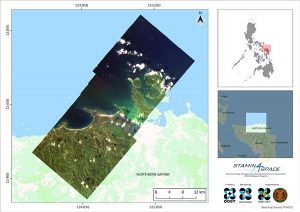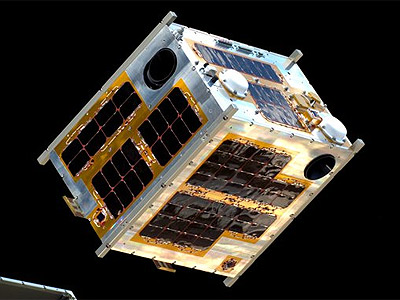Welcome home, Diwata-1!
After four years of its journey in space, Diwata-1 retires as it re-enters the Earth’s atmosphere.
Diwata-1 is the Philippines’ first microsatellite for scientific earth observation built by Filipino engineers and scientists from the University of the Philippines Diliman (UPD) in collaboration with Japanese universities, Tohoku University and Hokkaido University, and with support from the Department of Science and Technology (DOST). The microsatellite was launched into space on March 23, 2016 via Atlas-V rocket from Cape Canaveral, Florida and was deployed into orbit from the International Space Station (ISS) on April 27, 2020. Weighing 53 kgs and measuring 50cm x 35 cm x 55 cm, Diwata-1 carried three (3) optical instruments to undertake a scientific earth observation mission, which includes studying the extent of damages from natural disasters, assessing changes in vegetation and ocean productivity, and capturing large scale cloud patterns.
The status of Diwata-1 was being closely monitored by the STAMINA4Space program over the past few months as its altitude continued to decrease. The altitude of a satellite in Low Earth Orbit (LEO) is expected to decay over time and, in the case of Diwata-1, there is no propulsion mechanism to keep it in orbit. As spacecraft and satellites reach the critical altitude of 250 kms from the Earth’s surface during reentry, there is an increase in atmospheric drag that causes the altitude to decay more rapidly. When the altitude reaches the Karman line, which is the accepted boundary between the Earth’s atmosphere and space, Diwata-1 is expected to de-orbit and burn up due to increasing friction with the atmosphere, ultimately ending its service to the country. Initially forecast to spend 18 months in orbit, Diwata-1’s orbital lifetime lasted almost four (4) years.
The microsatellite was last contacted by the CRESST Ground Station in Tohoku University on April 6, 2020 at 4:49 A.M. Philippine Standard Time when it passed over Sendai, Japan. Based on the last received telemetry status, Diwata-1 was 114 kilometers from the Earth’s surface, moving at a speed of 7.54 kms.
Diwata-1’s milestones
During its scientific earth observation mission, Diwata-1 contributed to advancements in the Philippines’ space technology landscape. As a platform for technology demonstration and experimentation, Diwata-1 enabled Filipino researchers to conduct hands-on and in-depth mission planning, design, integration, testing and operation of an earth observation satellite.
Diwata-1 covered 114,087 km. sq. of the Philippines’ land, or roughly 38.0%. Diwata-1 also orbited approximately 22,643 times around the Earth and passed by the Philippines roughly 4,800 times.
Figure 1. Visualization of Diwata-1’s coverage of the Philippines
The development of Diwata-1 also helped build skilled manpower and new knowledge for the country in space science, technology and applications. To date, more than 100 individuals have been trained on various technical aspects of small satellites and related technologies. Through efforts on the localization of relevant small satellite components and systems, the STAMINA4Space program is also extending its reach to local companies and the private sector towards building a viable domestic space industry sector.
Furthermore, a graduate track on nanosatellite engineering is offered by the University of the Philippines Electrical and Electronics Engineering Institute (UP EEEI) and the Space Science and Technology Proliferation Through University Partnerships (STeP-UP), a component of the STAMINA4Space Program.
The program also gave way to the construction of research facilities such as the University Laboratory for Small Satellites and Space Engineering Systems (ULyS³ES), which opened in 2019. The establishment of ULyS³ES aims to provide a home for the local research and development of emerging space technology in the country. Currently, it houses the engineering models of two other Philippine satellites — the nanosatellite Maya-1 and microsatellite Diwata-2, the successor of Diwata-1 — which are used for space science education and demonstration.
Diwata-1’s last mission
Diwata-1’s final image of the Philippines was captured in Samar on December 28, 2019. It went on to capture some more images to study satellite image degradation, with its last captures recorded in February 2020.

Image 1. Diwata-1’s last mission was to gather satellite images of Samar. This image was captured on December 28, 2019.
Diwata-1’s legacy
Diwata-1, Diwata-2, and Maya-1 are initiatives by the Philippine Scientific Earth Observation Microsatellite (PHL-Microsat) Program, which was funded by the Department of Science and Technology (DOST), monitored by DOST’s Philippine Council for Industry, Energy, Emerging Technology Research and Development (PCIEERD), and implemented by the DOST Advanced Science and Technology Institute (ASTI) and the University of the Philippines Diliman (UPD). PHL-Microsat was succeeded by the STAMINA4Space program in 2019 under the leadership of then DOST-ASTI Acting Director and now Philippine Space Agency (PhilSA) Director General, Dr. Joel Joseph S. Marciano, Jr.
On the occasion of Diwata-1’s end of mission, Dr. Marciano, Jr. issued the following statement: “Diwata-1 may have burned up completely as it re-entered our atmosphere, but it did not disappear. It leaves behind a body of trailblazing work and knowhow, and produced a core group of Filipino engineers, scientists and researchers who will ensure that we continue on the path to building endogenous capacity in space technology in the country. Thanks to the pioneering initiatives of the University of the Philippines, the Department of Science and Technology and partners in the STAMINA4Space program, the recently-established Philippine Space Agency and the future of space technology in the country is on solid footing.”
Dr. Gay Jane Perez, the new Program Leader of the STAMINA4Space program, adds: “As we celebrate the legacy of Diwata-1, it is a fitting reminder of how Earth observation satellites collect invaluable data about our planet. We could rely on these space-based platforms to remotely take the much-needed measurements of our rapidly changing environment. And with Diwata-1’s end of life, its mission to provide actionable information for the benefit of the Filipinos continues with Diwata-2.”
Read more about Diwata-1 or browse, download, or request for images.

